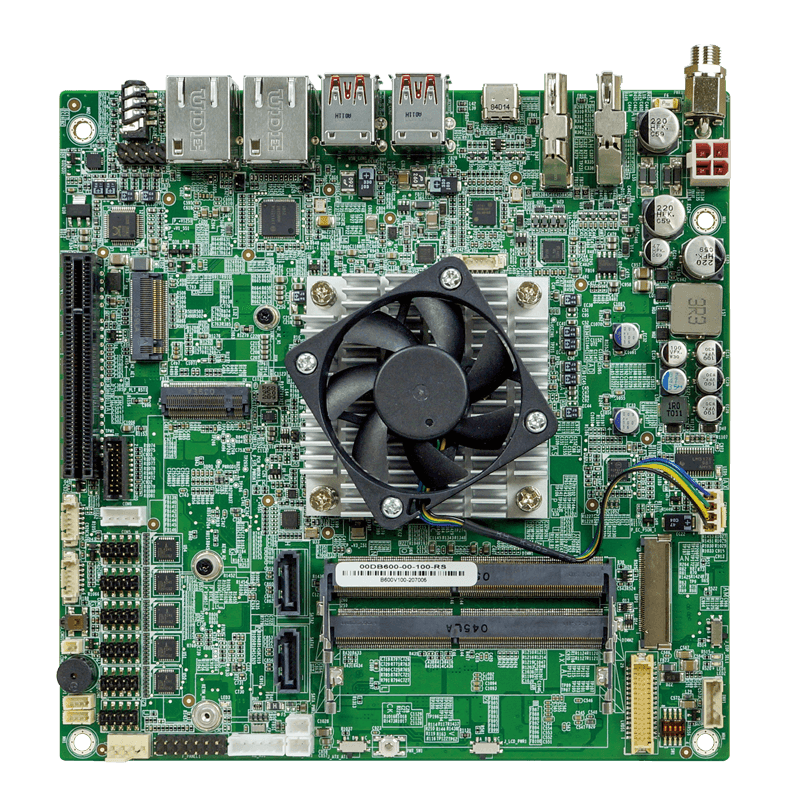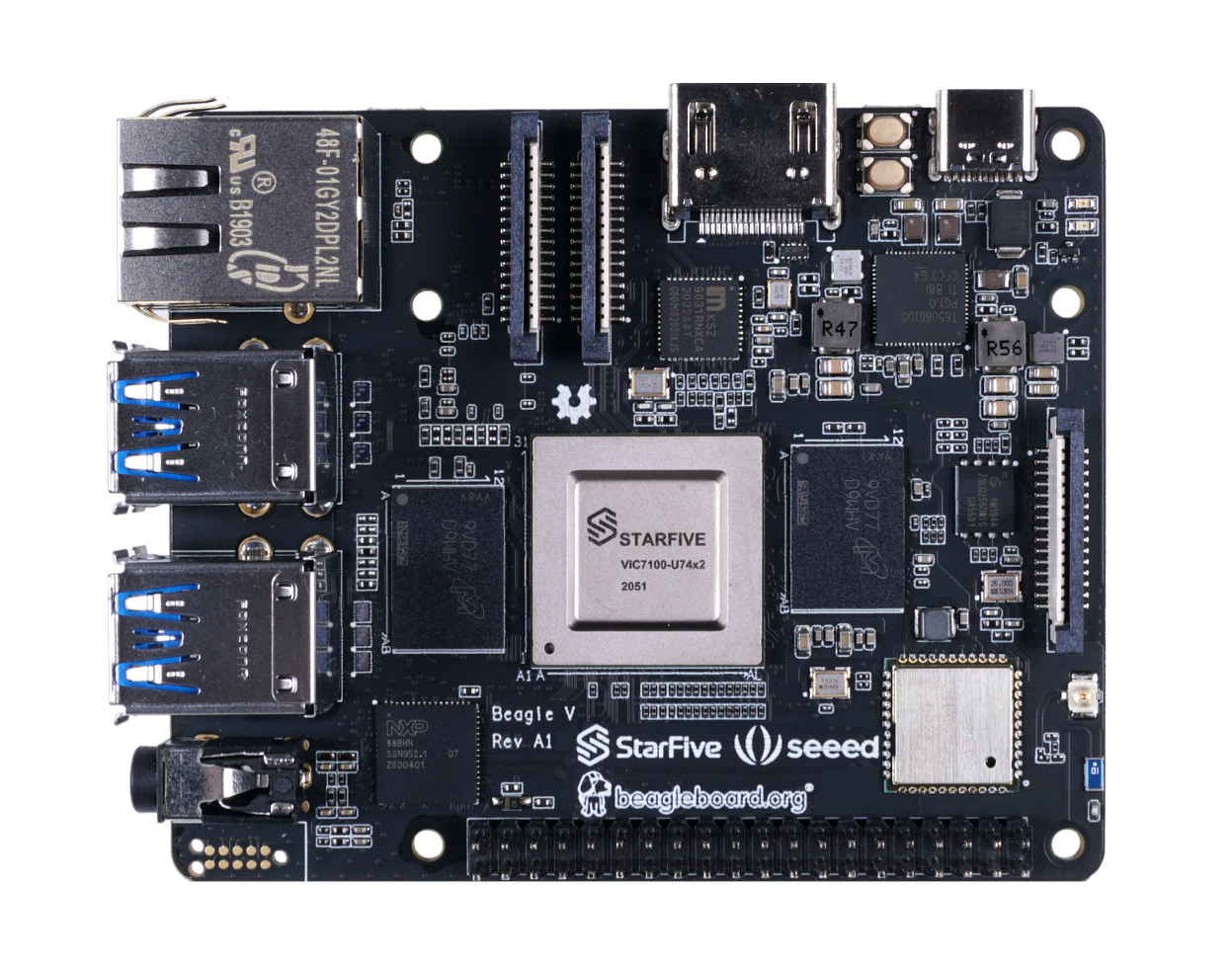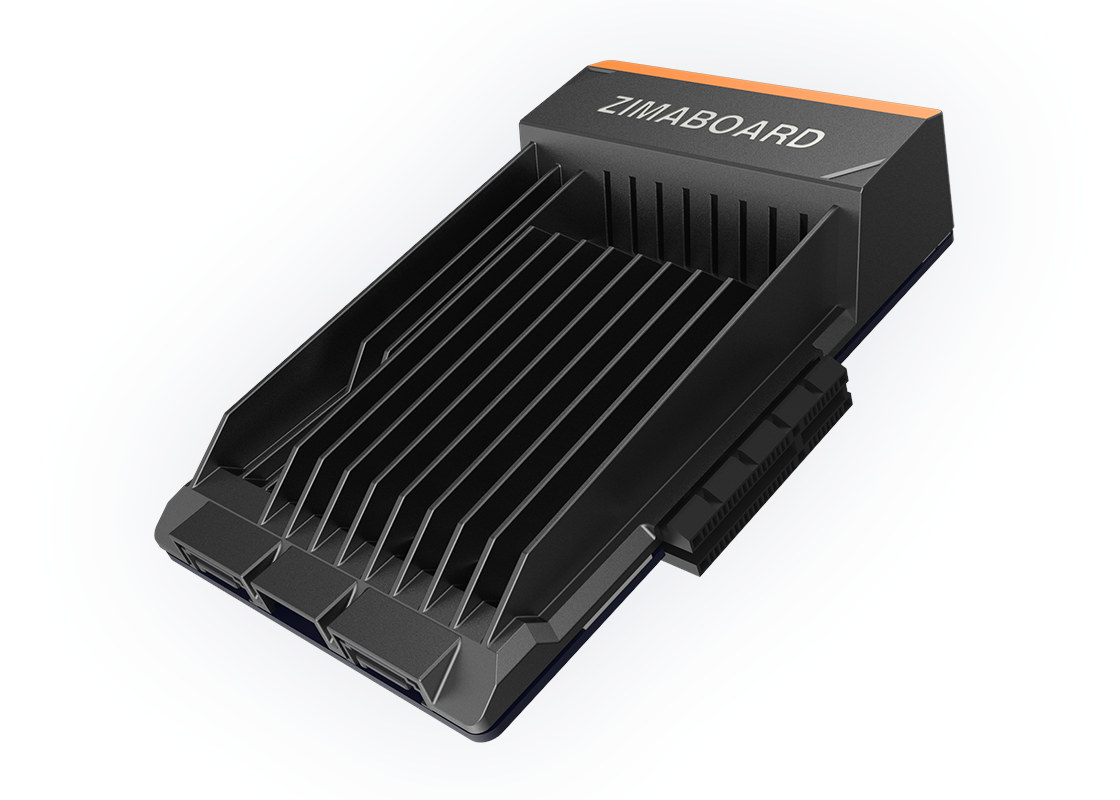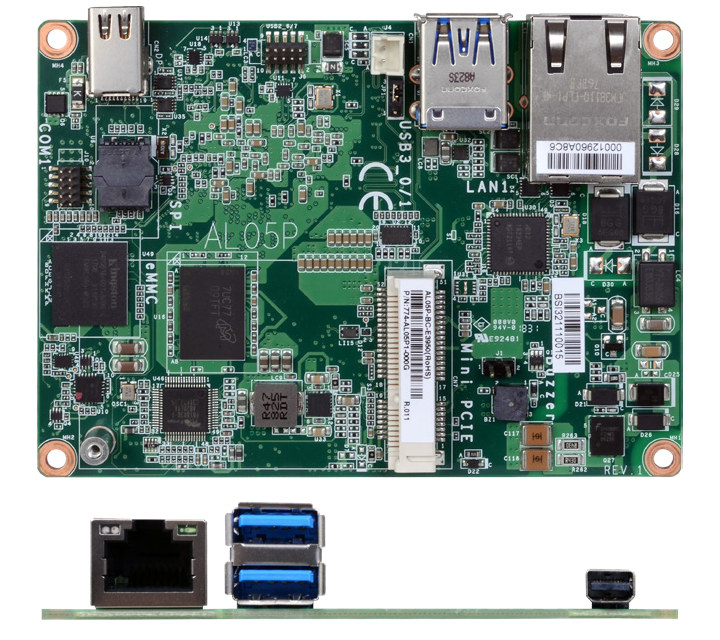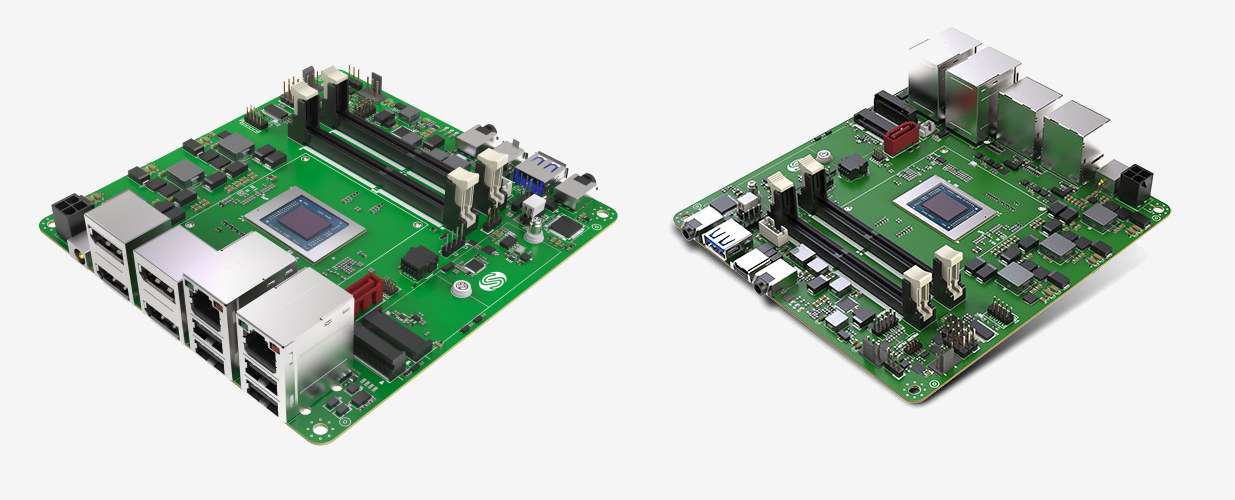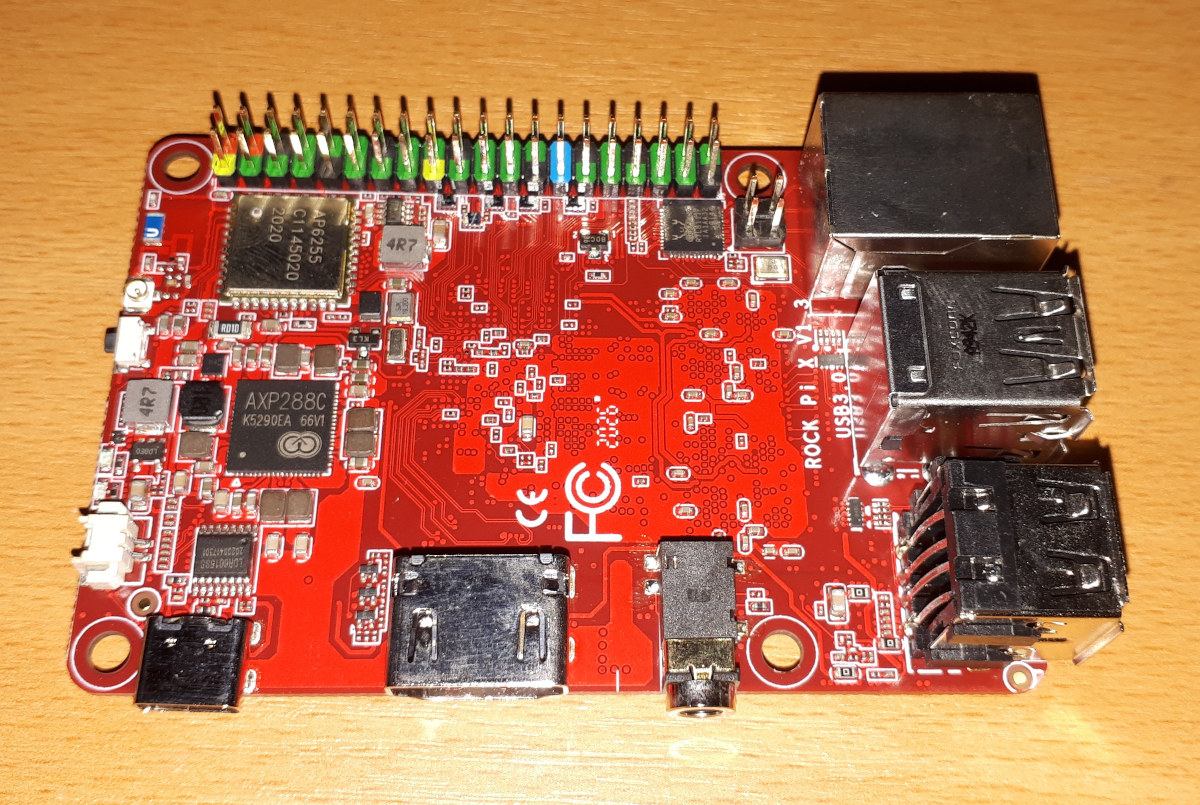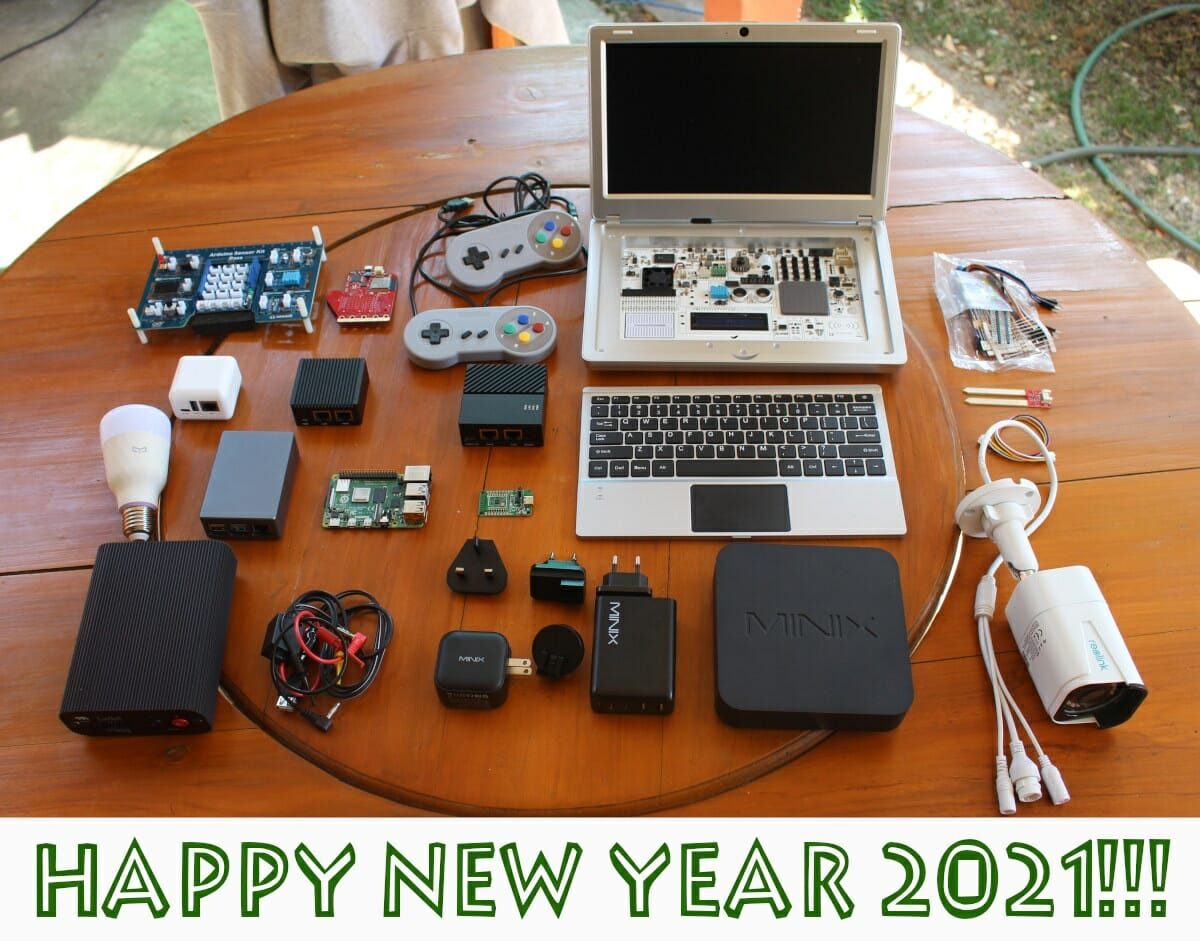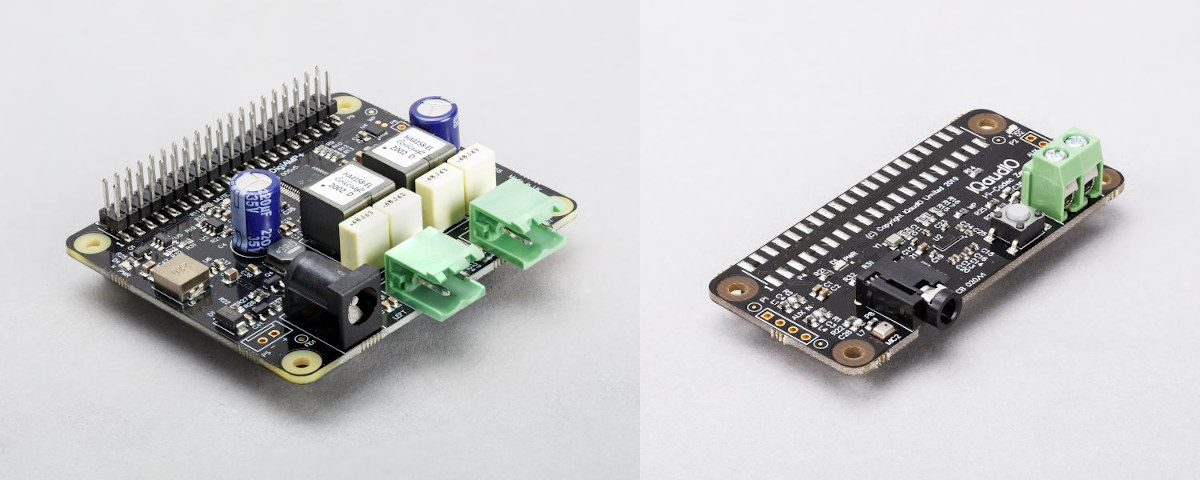IEI launched tKINO-ULT6 is a Thin Mini-ITX SBC that comes with an 11th generation Intel core processor part of the Tiger Lake-UP3 CPU family. The tKINO-ULT6 Mini-ITX SBC also supports quadruple independent displays, SATA 6Gb/s, dual Intel 2.5GbE, HD audio, and RoHS. It can handle a wide range of input DC power from 9V to 36 V. The tKINO-ULT6 SBC is expected to be found in CNC (Computer Numerical Control) machines, real-time controls, human-machine interfaces, tool applications, medical imaging, and other applications requiring high resolution. Key Features of the tKINO-ULT6 Mini-ITX SBC Mini-ITX form factor with 11th Gen. Intel Tiger Lake UP3 Embedded processor, support for DDR4-3200 memory Video Output – Four independent displays via HDMI, DP, eDP/LVDS, USB4 Networking Dual Intel 2.5GbE LAN M.2 A key for WIFI+Bluetooth (PCIe x1/USB 2.0), M.2 M key for Storage (PCIe x2/SATA) Expansion – PCIe x8 Gen 4.0 slot The tKINO-ULT6 Mini-ITX SBC […]
$119+ BeagleV powerful, open-hardware RISC-V Linux SBC targets AI applications
Running Linux on RISC-V hardware is already possible, but you’d have a choice of low-end platforms like Kendryte K210 that’s not really practical for anything, or higher-end board like SiFive HiFive Unmatched or PolarBerry for which you’d have to spend several hundred dollars, or even over one thousand dollars to have a complete system. So an affordable, usable RISC-V Linux SBC is clearly needed. We previously wrote about an upcoming Allwinner RISC-V Linux SBC that will be mostly useful for camera applications without 3D GPU, and a maximum of 256MB RAM. But today, we have excellent news, as the BeagleBoard.org foundation, Seeed Studio, and Chinese fabless silicon vendor Starfive partnered to design and launch the BeagleV SBC (pronounced Beagle Five) powered by StarFive JH7100 dual-core SiFive U74 RISC-V processor with Vision DSP, NVDLA engine, and neural network engine for AI acceleration. BeagleV specifications: SoC – StarFive JH7100 Vision SoC with: […]
ZimaBoard Intel Apollo Lake SBC and micro server goes for $69.99 and up (Crowdfunding)
We’ve had our fair share of low-cost x86 SBCs in recent years, mostly based on Intel Cherry Trail processor, with the likes of Atomic Pi and Rock Pi X. Ice Whale Technology has come up with its own low-cost Intel single board computer with ZimaBoard “single board server” as it mostly has network storage applications in mind, but with a 4K capable mini DisplayPort connector it could also be used as a standard SBC or mini PC. There are two versions of the board both with Apollo Lake processors: ZimaBoard 216 with a dual-core Celeron N3350 coupled with 2GBRAM and 16GB eMMC flash, and ZimaBoard 832 powered by a quad-core Celeron N3450 with 8GB RAM and 32GB storage. Both ZimaBoard SBC shares most of the same specifications in terms of I/Os: SoC – ZimaBoard 216 – Intel Celeron N3350 dual-core processor @ 1.1/2.4GHz (Burst freq.) with 12 EU Intel HD […]
2.5-inch “Industrial Pi” Pico-ITX SBC offers PoE , mini DP++ port
Taiwan based DFI has launched the AL05P “Industrial Pi + PoE” 2.5-inch Pico-ITX SBC powered by an Apollo Lake processor that reminds me of last year’s DFI GHF51 SBC based on AMD Ryzen Embedded R1606G processor but with a larger, and more standard form factor that’s also part of the “Industrial Pi” family. The board also comes with 4GB RAM, up to 64GB eMMC, a mini DisplayPort video output, two USB 3.1 ports, Gigabit Ethernet with isolated PoE, a mini-PCIe, and more. DFI AL05P SBC specifications: SoC (one or the other) Intel Atom x5-E3940 quad-core processor @ 1.6/1.8 GHz with 2MB cache, Intel HD Graphics; 9.5W TDP Intel Atom x5-E3930 dual-core processor @ 1.3/1.8 GHz with 2MB cache, Intel HD Graphics; 6.5W TDP Intel Pentium N4200 quad-core processor @ 1.1/2.5 GHz with 2MB cache, Intel HD Graphics; 6W TDP Intel Celeron N3350 dual-core processor @ 1.1/2.4 GHz with 2MB cache, […]
AMD Ryzen Embedded V2000 mini-STX SBC to power gaming machines, digital signage, PoS…
SAPPHIRE introduced the FS-FP5V 5-inch SBC powered by AMD Ryzen Embedded V1000 processor in 2018, followed by FS-FP5R board based on AMD Ryzen R1000 processor the following year. But with the launch of AMD Ryzen Embedded V2000 processor family in 2020, it should come as no surprise that Sapphire has also introduced a new 5″x5″ mini-STX SBC powered by Ryzen Embedded V2000 SoCs with Sapphire (V2000) FS-FP6. Sapphire FS-FP6 specifications Specifications with differences against FS-FP5V highlighted in bold: SoC AMD Ryzen Embedded V2516 hexa-core/12-thread processor @ 2.1 GHz / 3.95 GHz (Turbo) with 3MB L2 cache, 6 CUs Radeon RX Vega 6 GPU @ 1.5 GHz; TDP: 10-25W TDP (15W default) AMD Ryzen Embedded V2546 hexa-core/12-thread processor @ 3.0 GHz / 3.95 GHz (turbo) with 3 MB L2 cache, 6 CUs Radeon RX Vega 6 GPU @ 1.5 GHz; TDP: 35-54W TDP (45W default) AMD Ryzen Embedded V2718 octa-core/16-thread processor […]
Rock Pi X Review – An Atom x5 SBC running Windows 10 or Ubuntu 20.04
The ROCK Pi X is the first x86 SBC (single board computer) from Radxa and resulted from repeated enquiries about running Windows on their earlier ROCK Pi 4. The ROCK Pi X comes in two models (Model A and Model B) with each model having either 1GB, 2GB, or 4GB of RAM and either 16GB, 32GB, 64GB, or 128GB of eMMC storage. Additionally, the Model B includes WiFi and Bluetooth together with supporting Power over Ethernet (PoE) although this requires an additional HAT. Both Seeed Studio and Radxa provided samples and in this review, I’ll cover some performance metrics from both Windows and Ubuntu and also discuss the thermals. Rock Pi X Hardware Overview The ROCK Pi X is similar in size to a Raspberry Pi board… but with slightly different ports and port locations even when compared to the Raspberry Pi 4. It is physically slightly larger than its […]
Year 2020 in review – Top ten posts and stats
It’s this time of the year when we look back at what happened, and what may be next. 2020 did not pan out as planned in more ways than one, but there were still some interesting developments. Based on 2019 announcements, 2020 was promising to be an exciting year for Amlogic and Rockchip with the expected launch of RK3588 and S908X high-end processors for 8K capable devices, but we’ll have to wait for 2021 for this to happen. Instead, the most interesting processor of the year from the Allwinner, Amlogic, and Rockchip offerings was probably Amlogic S905X4 processing adding AV1 hardware decoding. As pointed out in our “RISC-V 2020 highlights” post, it was a fairly eventful year for RISC-V architecture, although there’s still a long road ahead, especially for application processors. We had seen some general-purpose and Bluetooth RISC-V MCUs in 2019, but 2020 saw the launch of the first […]
Raspberry Pi gets official IQAudio audio boards, improved industrial support
The Raspberry Pi was envisioned as an inexpensive, yet highly-features platform to teach programming to young kids, but as soon as the board was released in 2012 things quickly got out of control and many people started to use the low-cost SBC in various projects, or just as an XBMC (now Kodi) media center. Over 8 years later, that means 44 percent of Raspberry Pi boards were sold to the industrial/commercial market as opposed to individuals or the education market. Two recent announcements from the Raspberry Pi Foundation / Raspberry Pi Trading highlight the willingness of the organizations to expand the use of their boards to more markets: IQaudio audio boards and a new section of the website specific to industrial support. IQaudio audio boards for Raspberry Pi If you’ve already heard about IQaudio, that’s because the audio boards are not new. They were developed by a company called IQaudio […]


